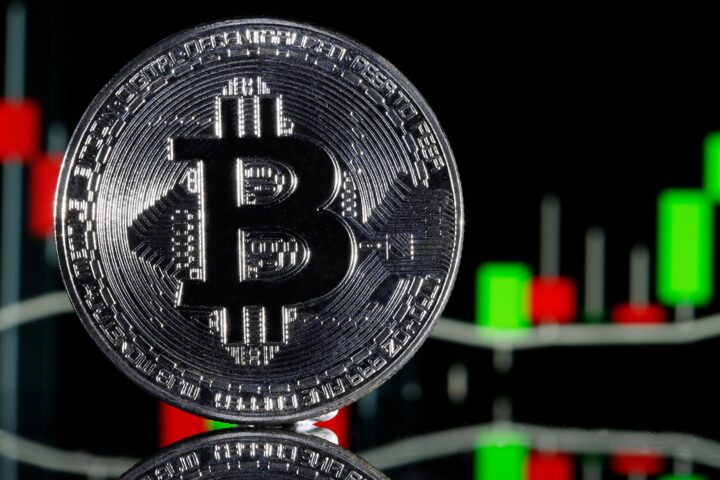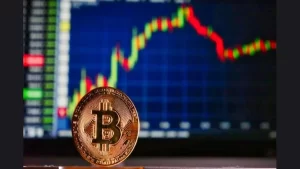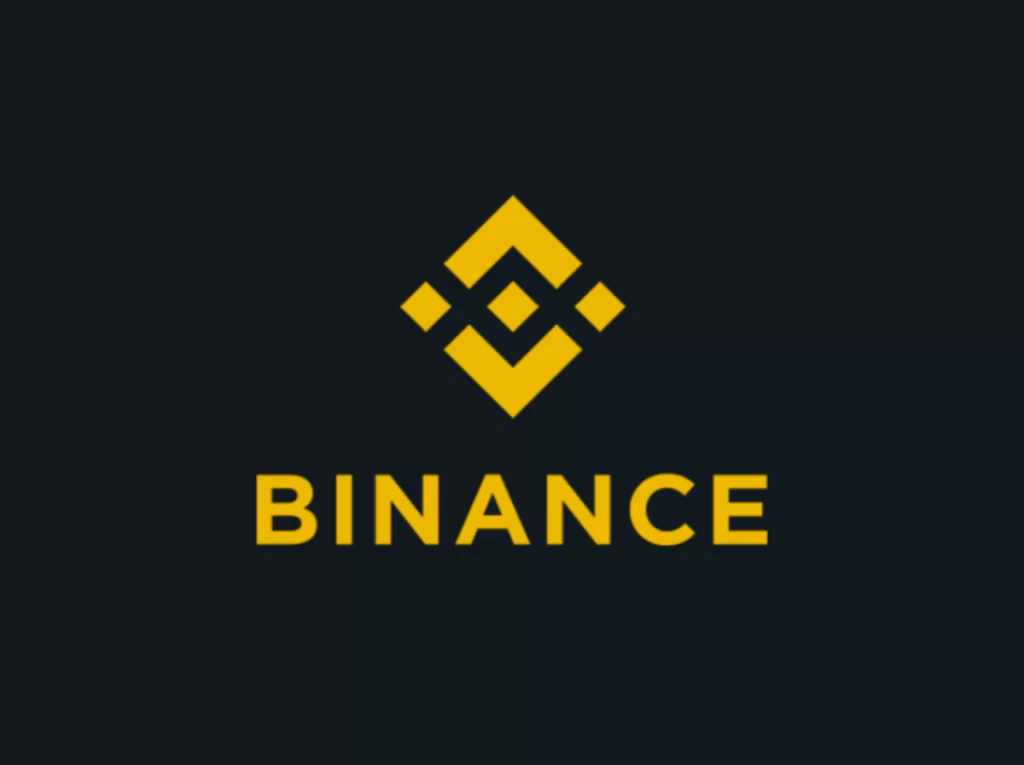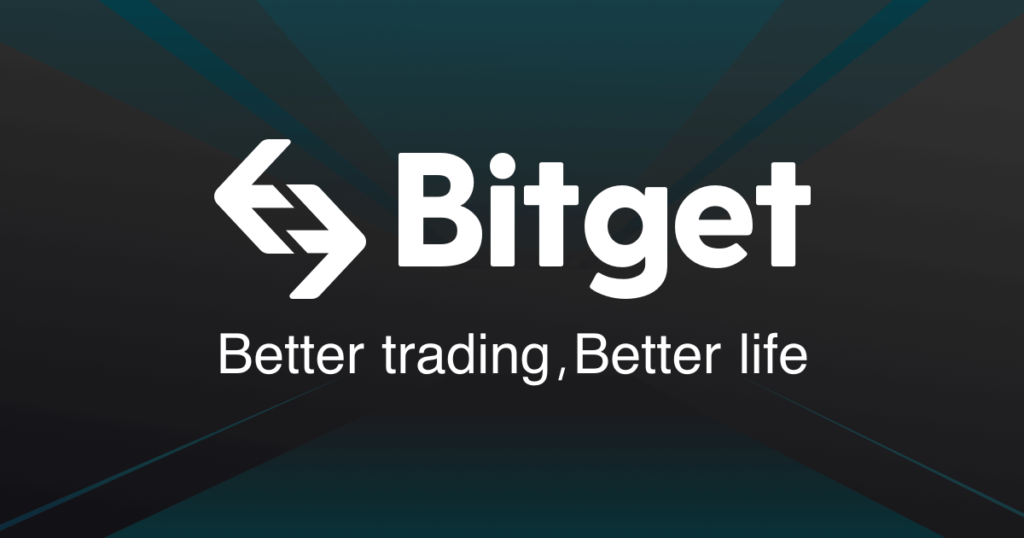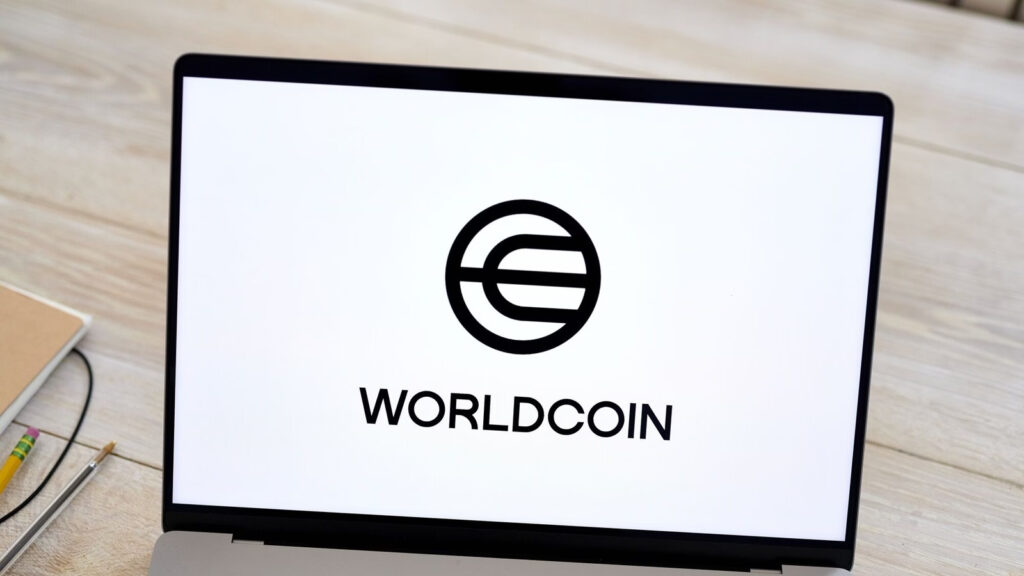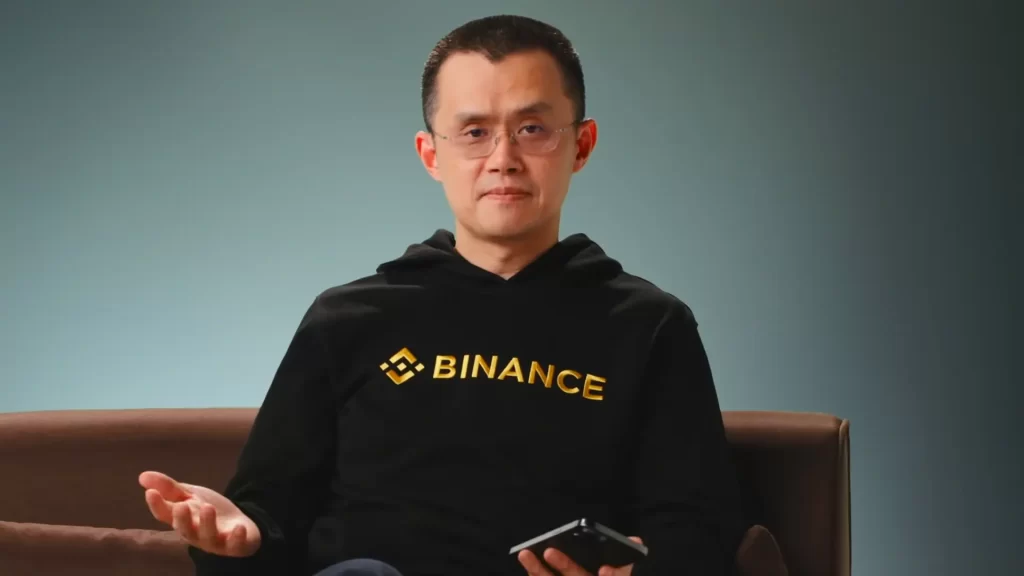Earlier this year, a novel concept known as Ordinals emerged, causing a stir in the Bitcoin community.
Ordinals introduced a distinctive marking on the smallest unit of Bitcoin, the Satoshi.
While some dismissed it as spam, others embraced it as a bridge for BRC-20 tokens and NFTs onto the Bitcoin platform. This innovation sparked a series of advancements.
Now, attention is shifting to “recursive inscriptions,” a complex but potentially powerful evolution.
Recursive inscriptions offer the promise of enabling more intricate functionalities on the Bitcoin blockchain, similar to Ethereum’s smart contracts.
Enthusiasts believe that recursive inscriptions could catalyze Ordinals’ progression from NFTs and digital artifacts to forming the foundation for a comprehensive decentralized finance (DeFi) ecosystem on Bitcoin.
There are also expectations that it could facilitate Bitcoin’s expansion into competing with decentralized storage provider IPFS, or even the creation of an interconnected on-chain supercomputer.
Stanford PhD Danny Yang, the creator of OCM Dimensions and a Bitcoin enthusiast since 2013, regards recursive inscriptions as the key to the next phase of Bitcoin’s evolution.
He envisions them enabling the emergence of valuable digital assets beyond just NFTs.
While these advancements remain speculative and early-stage, they are rejuvenating interest in Bitcoin.
Despite being a subject of criticism for not covering Bitcoin extensively, it’s now evident that meaningful developments are unfolding.
Danny Yang has been actively working on recursive inscriptions since February, demonstrating their potential through projects like OCM Dimensions and OCM Genesis.
READ MORE: UK Prime Minister Allocates £100 Million to Acquire Computer Chips for AI Advancement
These projects showcase the possibilities unlocked by recursive inscriptions, marking a significant turning point in people’s understanding of their significance.
Recursive inscriptions expand the horizons of Bitcoin applications by interlinking data through a chain of calls, much like smart contracts.
This functionality enables the hosting of complex data sets on the Bitcoin blockchain, such as video and audio files, which was previously unfeasible.
Furthermore, these inscriptions can be reused, drastically reducing storage costs.
This mechanism offers a multitude of possibilities, from hosting open-source libraries on-chain to enabling applications like on-chain AI, effectively building a community-driven public infrastructure.
Although still in its infancy, the potential impact of recursive inscriptions and smart contracts on Bitcoin is vast.
They could pave the way for a Bitcoin-native DeFi ecosystem and challenge data storage conventions through the blockchain’s decentralized nature.
This wave of innovations is transforming Bitcoin’s image and fostering a new era of development driven by creators and developers.
In conclusion, the emergence of Ordinals and subsequent recursive inscriptions is reinvigorating Bitcoin’s landscape.
These developments hold the potential to redefine Bitcoin’s role, from being a simple currency to a dynamic platform for diverse applications.
As the Bitcoin community begins to grasp their implications, a future filled with possibilities is emerging.
Other Stories:
Bitget Cryptocurrency Exchange Enhances KYC Procedures to Align with Global Regulations
Ordinal Inscriptions Maintain Dominance on Bitcoin Network Despite Price Dip
New DeSo Network Friend.tech Generates Over $1 Million in 24 Hours
Numerous conjectures arise whenever the price of Bitcoin undergoes a sudden and steep plummet.
The usual suspects encompass government regulations, potential price manipulation by exchanges, actions of Bitcoin whales, overleveraged traders, and even certain conspiracies involving Tether.
Between August 15 and 18, Bitcoin encountered a notable 12% decline in its price.
This occurrence adhered to a familiar sequence, eliciting a range of explanations from analysts and experts.
Nevertheless, the decentralized nature of cryptocurrencies and the opacity prevailing among exchanges create hurdles in confirming whether a particular entity influenced the price shift.
On August 11, Ceni, a co-founder of Ceni Capital, offered a prediction that manifested partially correct. Ceni foresaw a Bitcoin price below $29,000, envisioning that the United States Securities and Exchange Commission (SEC) might delay its verdict concerning the ARK Bitcoin exchange-traded fund (ETF).
It’s important to acknowledge that this prediction lacked specifics regarding timing and precise support levels. Consequently, the statistical basis for this theory becomes less reliable.
Despite this, Ceni has indicated BlackRock as a conceivable initiator of Bitcoin’s downturn, a proposition necessitating thorough inquiry.
The notion that BlackRock might gain from a reduced Bitcoin price prior to launching a spot Bitcoin ETF is not as straightforward as it may appear.
While the concept of a lower Bitcoin price heightening profitability upon ETF introduction might seem logical, various factors could misalign with BlackRock’s broader interests.
Primarily, BlackRock has established itself as a reputable financial institution grounded in upholding market stability and investor confidence.
An abrupt and substantial drop in Bitcoin’s worth could undermine the general credibility of the cryptocurrency market, a situation BlackRock would aim to evade.
Preserving the market’s legitimacy might outweigh immediate gains stemming from a low Bitcoin price.
Secondarily, obtaining regulatory endorsement is pivotal for launching any financial product, particularly in the cryptocurrency realm.
The SEC diligently evaluates potential manipulation risks and safeguards for investor security.
Engaging in actions that could be construed as price manipulation might imperil BlackRock’s prospects of obtaining necessary regulatory approvals for its ETF proposition.
Lastly, fostering investor assurance holds paramount significance when introducing any investment product, particularly a novel one such as a Bitcoin ETF.
A sharp descent in Bitcoin’s price could erode trust among investors, not solely in the asset class itself, but also in the ETF.
Hence, BlackRock’s vested interest probably lies in unveiling the ETF amid a phase of positive sentiment, wherein investors feel assured about potential future gains.
Another frequently pondered likelihood when elucidating a Bitcoin price drop is the potential for government intervention in the cryptocurrency sector. The motive behind regulation would be to curtail demand, bolstering the strength of the U.S. dollar.
READ MORE: Bybit Unveils NFT Collection as Part of Velocity Series
Typically, these theories propose measures to oversee stablecoins and non-U.S.-based exchanges.
Market analyst Joe Kerr discussed this on X (formerly Twitter).
However, this theory faces challenges and factors that render it less plausible.
Firstly, government wallets can be tracked to a degree, but it’s crucial to remember that governments typically possess only a fraction of all Bitcoin, thus their sway over the entire market remains limited.
Moreover, the notion of speculating against the price of BNB is not as facile as it sounds.
Traders aiming to bet against BNB would need to borrow it, a feat unfeasible on regulated platforms.
Furthermore, by scrutinizing Binance’s transparency page, one can ascertain in real-time whether the exchange’s Bitcoin wallets are dwindling compared to other exchanges.
This might indicate unusual activities, such as improper utilization of customer funds or financial predicaments.
Tangible data from these observations holds more value than mere conjecture, offering insights into the exchange’s performance.
Ultimately, most of these theories hinge on assumptions and oversimplifications, disregarding the intricate nature of cryptocurrency markets, exchanges, and regulations.
The actual outcomes might substantially diverge from suggested hypotheses.
While the truth might forever remain elusive to the public, individuals can at least dismiss theories like BlackRock deliberately crashing Bitcoin prior to a spot Bitcoin ETF approval.
Other Stories:
FTX Founder Seeks Release for Defense Collaboration
Global Disparities in Bitcoin Mining Costs Highlighted: From $208,560 in Italy to $266 in Lebanon
SEC Lawsuit Stifles XRP’s US Adoption Potential, Pro-XRP Advocate Asserts Amid Coinbase’s Moves
Binance Labs, the venture capital arm of Binance, has joined the ranks of investors in the Zero-Knowledge Proof (ZK-proof) technology, as it allocates a significant investment to Delphinus Lab’s ZK-proof-powered infrastructure.
The highlight of this development is Binance Labs’ strategic injection of $2.2 million into Delphinus Lab. This funding will bolster the ongoing advancement of Delphinus Lab’s application rollup platform, known as zkWASM Hub.
This platform is designed to provide automated proving and batching services specifically tailored for Web3 applications.
At the core of this innovation lies the zero-knowledge WebAssembly (zk-WASM) virtual machine, which is being heralded as a groundbreaking open-source virtual machine.
It boasts the distinctive feature of supporting ZK computation and application software development kits. The zk-WASM Hub’s purpose is to streamline the development of ZK applications across various developer languages, seamlessly deployable within the WebAssembly-supported environments.
The technology’s potential to enhance the security and privacy of decentralized applications through ZK-proof technology is highly anticipated.
A remarkable facet of the zkWASM Hub is its capability to facilitate the distribution of GitHub applications within its ecosystem.
This is achieved through an automated compilation and updating service, which adds to its user-friendly and versatile nature.
Delphinus Lab has taken strides in implementing application-specific software development kits across diverse languages and applications.
This includes dynamic programmable non-fungible tokens, fully on-chain games, high-performing trustless Central Limited Order Book (CLOB), and trustless oracles.
The founder and CEO of Delphinus Lab, Sinka Gao, articulated the aspiration to merge the robustness of Web2 with the decentralized and trustless attributes of Web3, fostering the creation of advanced decentralized applications within the zkWASM Hub.
READ MORE: Binance Contemplates Legal Action Against Former Payment Provider
Binance Labs’ investment orientation encompasses a broad spectrum of innovations aimed at scalability and user onboarding to Web3.
This approach aligns with their exploration of projects supporting modular blockchain, liquid staking decentralized finance protocols, and ZK-proof solutions.
Notably, ZK-proof technology has played a pivotal role in scaling the Ethereum ecosystem, with influential players such as ConsenSys, Polygon, and StarkWare pioneering its adoption.
An exemplar of ZK-proof’s application is seen in the decentralized Web3 data service Space and Time.
Here, ZK-proof technology is utilized to cryptographically validate information queries within the ecosystem.
Through Proof of SQL, succinct non-interactive arguments of knowledge (SNARK) cryptographic proofs are generated, assuring users of query accuracy and integrity in the decentralized data network.
The collaboration between Binance Labs and Delphinus Lab underscores the enduring significance of ZK-proof technology in shaping the future of decentralized applications and Web3 ecosystems.
Binance Contemplates Legal Action Against Former Payment Provider
Crypto Industry Adapts to Bear Market
Ripple Labs vs. SEC: Appeals Process Sparks Debate Over Ongoing Legal Case
Friend.tech, a newly introduced decentralized social network operating on the DeSo (Decentralized Social) framework, demonstrated a remarkable feat on August 19th by amassing over $1 million in fees within a mere 24-hour span.
This achievement surpassed well-established contenders in the crypto arena, including Uniswap and the Bitcoin network.
The beta version of this groundbreaking platform was unveiled on August 11th, and its distinctive feature lies in its ability to enable users to tokenize their social connections.
This is realized through the acquisition and trading of “shares” in their network, granting the purchaser of a share the privilege of engaging in private communication with the share’s owner.
Notably, the platform imposes a 5% transaction fee, with the owner reaping the rewards from the trade’s spread.
Powered by Coinbase’s layer-2 Base technology, Friend.tech has garnered substantial traction. Data from DefiLlama reveals that the platform amassed an astonishing $1.12 million in fees in a single day, tallying up to $2.8 million since its launch.
Presently, the total revenue for the project stands at $818,620, buttressed by over 650,000 transactions and a cohort of more than 60,000 distinct traders.
The mastermind behind this endeavor is purported to be a developer operating under the moniker “Racer.” A senior software engineer at Coinbase attested to Racer’s past creations, which encompass the social media networks TweetDAO and Stealcam, both grounded in nonfungible tokens (NFTs).
With Friend.tech, Racer’s ambition is to beckon crypto influencers armed with a substantial fan base, enabling them to accrue royalties from trading fees.
Additionally, the platform aims to serve Web3 projects aspiring to cultivate ties with crypto industry powerhouses and venture capitalists.
READ MORE: Crypto Influencer Files $16 Million Lawsuit Against Bitget Exchange
The platform’s fervor has also fanned the flames of discussions concerning its revenue model, associated risks, and trajectory.
An anonymous researcher within the pseudonymous decentralized finance realm, Ignas, highlighted that the present business model of Friend.tech hinges solely on trading fees, thereby bypassing income from having more shareholders.
He further speculated that contentious figures could exploit the system to reap more substantial profits or even employ strategies aimed at fomenting fear, uncertainty, and doubt (FUD).
Lux Moreau, the progenitor of Talk.Markets, spotlighted the escalation of share prices as they are traded.
Notably, the 500th member procures a share at around 15.6Ξ, while the 250th member shells out 3.9Ξ, and the 100th participant acquires a share for 0.625Ξ.
In sum, Friend.tech’s ascent to prominence as a decentralized social network has been underscored by its remarkable financial performance within its initial 24 hours.
This accomplishment has positioned it as a contender to reckon with in the crypto realm, bringing fresh perspectives and debates about its operational framework and foreseeable trajectory.
Other Stories:
US Tech Giant Fires New Warning About ChatGPT
Crypto Industry Adapts to Bear Market
Bored Ape Yacht Club’s Yuga Labs to Scale Back OpenSea Support
Despite a recent decrease in Bitcoin’s price and speculation about the fading hype around Bitcoin NFTs, ordinal inscriptions have continued to dominate the Bitcoin network’s activity in the past week.
On August 21, the developer known as “Leonidas,” responsible for Ordinals, highlighted that the Bitcoin network had processed 530,788 transactions within the last 24 hours.
Astonishingly, 450,785 of these transactions were Ordinals related, comprising a substantial 84.9% of Bitcoin’s total activity.
This defies the narrative claiming Ordinals’ demise.
Supporting this trend, data from Dune Analytics substantiates the phenomenon, recording over 400,000 ordinal inscriptions on August 20.
In contrast, Bitinfocharts records a daily Bitcoin transaction count around 556,000, implying that more than 75% of network activity on August 20 stemmed from Ordinals.
Industry researcher Eric Wall further corroborated this by noting that during the week, an impressive 54% of Bitcoin’s transactions were Ordinals.
Dune Analytics indicates that a staggering 25.5 million Ordinal inscriptions have taken place, generating an impressive $53.4 million in fees on the Bitcoin network.
READ MORE: Crypto Influencer Files $16 Million Lawsuit Against Bitget Exchange
These inscriptions are primarily driven by the minting of BRC-20 tokens, with a remarkable 1.9 million of them minted in the previous week.
These recent observations stand in stark contrast to a DappRadar report on August 17.
The report suggested that Ordinals NFT usage and sales volume had experienced a decline since their peak in May.
However, it’s crucial to note that this report tracked NFT sales and trading volume on the Bitcoin network, not the underlying inscription activity that continues to surge.
Bitcoin Ordinals represent nonfungible asset artifacts designed to facilitate data inscription onto Satoshis, the smallest Bitcoin units.
Introduced in January, the subsequent months witnessed a surge in inscription popularity as thousands of Ordinals were minted on the Bitcoin network.
This surge led to network congestion and spikes in transaction fees, culminating in peak congestion during April and May.
Other Stories:
US Tech Giant Fires New Warning About ChatGPT
Crypto Industry Adapts to Bear Market
Bored Ape Yacht Club’s Yuga Labs to Scale Back OpenSea Support
Bitget, a cryptocurrency derivatives exchange headquartered in Seychelles, is making changes to its Know Your Customer (KYC) requirements in alignment with global regulatory standards.
The modifications to the KYC procedures are aimed at safeguarding user rights, fostering a secure environment for cryptocurrency trading, and adhering to regulatory suggestions provided by international watchdogs.
Commencing from September 2023, Bitget will implement adjustments to its KYC verification prerequisites.
New users registering on the platform will be mandated to complete level 1 KYC verification to unlock a range of Bitget services, encompassing cryptocurrency deposits and trading.
For users who register before September 1, the deadline for completing KYC verification is set for October 1, 2023.
During the interim period, users who haven’t finished the verification process by the end of September will still have the liberty to execute deposits, withdrawals, and trades.
Nevertheless, as of October, users who have not undergone the KYC verification procedure will experience restrictions.
They will only be able to perform withdrawals, cancel orders, redeem subscriptions, and close positions.
The ability to initiate new trading orders will be curtailed for these users.
Bitget is committed to following stringent KYC protocols to authenticate the identities of its customers for the purpose of assessing risks.
This approach aligns with the practices of mainstream financial institutions and regulated entities.
In the spectrum of cryptocurrency exchanges, Bitget is not alone in its adoption of updated KYC policies. KuCoin, for instance, implemented comparable requirements in July 2023.
READ MORE: US Tech Giant Fires New Warning About ChatGPT
The platform now mandates identity checks for all new users to comply with global Anti-Money Laundering regulations.
Failure to complete the KYC checks renders users ineligible for KuCoin’s array of services and products, which involves providing personal information, ID details, submitting ID photos, and undergoing a facial recognition process.
OKX, another prominent player, is also enforcing a KYC protocol for identity verification. Users on OKX are granted a deadline in September similar to Bitget.
This process mirrors the three-step approach seen on KuCoin. Users who neglect the verification process on OKX will lose access to services starting from September 21.
In summary, Seychelles-based cryptocurrency derivatives exchange Bitget is proactively upgrading its KYC requirements to comply with global regulations.
These changes are devised to ensure user protection, cultivate a secure trading environment, and adhere to regulatory standards.
Other Stories:
Bored Ape Yacht Club’s Yuga Labs to Scale Back OpenSea Support
Crypto Influencer Files $16 Million Lawsuit Against Bitget Exchange
The Worldcoin cryptocurrency initiative has encountered a fresh hurdle in its development as the Kenyan government establishes a 15-member parliamentary committee to delve into the contentious undertaking.
According to a local publication, the Kenyan government has set up a committee of 15 members, led by Gabriel Tongoyo, the Member of Parliament for Narok West, to thoroughly examine the disputed cryptocurrency project.
The parliamentary committee is tasked with conducting an investigation into the project over a span of 42 days and subsequently presenting its findings to the House committee.
Despite reaching out to MP Gabriel Tongoyo for insights into his reservations and objections against Worldcoin, Cointelegraph did not receive a response before the publication deadline.
This parliamentary scrutiny arrives approximately three weeks after Kenya suspended the operations of Worldcoin.
The suspension was enacted due to the project’s failure to comply with governmental directives to cease the practice of scanning users’ irises.
Interior Cabinet Secretary Kithure Kindiki, a pivotal figure in the suspension of Worldcoin’s activities, expressed the government’s apprehensions to the House committee.
READ MORE: Bored Ape Yacht Club’s Yuga Labs to Scale Back OpenSea Support
He emphasized that the government is deeply concerned about Worldcoin’s activities, which involve the registration of citizens and the collection of iris data. Kindiki asserts that these activities present significant security risks.
In addition to the parliamentary committee’s involvement, various regulatory bodies in Kenya have overwhelmingly rejected the Worldcoin project.
A court ruling has also led to the suspension of the project’s operations. This legal action was initiated following a lawsuit filed by the office of the data commissioner.
The court’s decision mandates the preservation of data collected by Worldcoin between April of the previous year and August 2023, pending the conclusion of the ongoing legal proceedings.
Worldcoin, a cryptocurrency endeavor centered around digital identification, introduces its native digital coin, WLD coin, which is acquired through iris scanning.
Although the project garnered nearly 2 million participants during its trial phase, its launch to the public across multiple countries brought to light several reports detailing its controversial practices.
As a result, governments in countries such as Nigeria, the United Kingdom, Argentina, Germany, and Kenya have launched investigations into the project.
Other Stories:
US Tech Giant Fires New Warning About ChatGPT
Crypto Influencer Files $16 Million Lawsuit Against Bitget Exchange
The Federal Republic of Somalia has taken a stance in line with several other nations by prohibiting the cryptocurrency-friendly messaging app Telegram, alongside the TikTok social media platform and the online betting site 1XBet.
The country’s Ministry of Communications and Technology (MOCT) officially declared on August 20 its decision to shut down these platforms.
Jama Hassan Khalif, the MOCT Minister, chaired a significant meeting involving the National Communications Agency and key Somali telecommunications companies to address telecommunications and internet security issues related to social media.
Khalif emphasized that the government of Somalia aims to safeguard the cultural fabric of Somali society as the pervasive influence of telecommunications and internet devices has begun to adversely impact lifestyles and promote detrimental habits.
The MOCT statement elaborated on the decision, stating, “It was considered important to shut down TikTok, Telegram and 1XBet gambling equipment, which had an impact on Somali youth, causing some of them to die.”
The move is also seen as a step to curb the proliferation of inappropriate content and propaganda.
Khalif’s assertion that these platforms are exploited by “terrorists and immoral groups” to disseminate disturbing visuals and misinformation to the public underscores the urgency of the decision.
He further directed Telegram and other applications to suspend their operations within Somalia by August 24. Non-compliance with this directive, he warned, would lead to legal consequences.
READ MORE: US Tech Giant Fires New Warning About ChatGPT
The ban, announced by the Ministry of Telecommunications and Technology, is designed to counter and prevent indecent activities, harmful contents, and the spread of extremist propaganda.
The motivation behind this move remains focused on protecting the well-being of the nation’s youth and preserving cultural values.
Although the ramifications of Somalia’s ban on platforms like Telegram for its cryptocurrency adoption remain unclear, the country’s stance does not appear to directly affect the use of cryptocurrencies like Bitcoin (BTC), which is not prohibited within Somalia.
However, the debate over the association of cryptocurrencies with potential terrorism financing risks remains ongoing in global jurisdictions.
This development comes on the heels of Iraq’s decision to lift the ban on Telegram in mid-August after initially imposing it due to concerns about personal data security.
Similarly, in Brazil, Telegram faced a temporary suspension in April due to investigations into the platform’s use by neo-Nazi groups for inciting violent actions.
The platform faced substantial fines for non-cooperation in the investigation of such activities.
Other Stories:
Crypto Industry Adapts to Bear Market
Bored Ape Yacht Club’s Yuga Labs to Scale Back OpenSea Support
Crypto Influencer Files $16 Million Lawsuit Against Bitget Exchange
Customers using Binance, a prominent cryptocurrency exchange, are reportedly encountering problems with fiat withdrawals in Europe due to complications related to Single Euro Payments Area (SEPA) transfers.
As of August 20, Binance’s customer support revealed in a now-deleted post on X (formerly Twitter) that the exchange had temporarily suspended euro withdrawals and deposits through SEPA.
Binance cited the discontinuation of support from its payment provider as the reason behind this suspension.
Binance acknowledged the inconvenience caused by this situation and assured users that efforts were underway to resolve the issue promptly.
The incident arose when a Binance user in Europe reported being unable to withdraw a substantial amount of Euros they had purchased on the platform.
The user’s complaint included frustration over not being able to access their funds due to the closure of their Paysafe account.
The user remarked that such actions were more characteristic of untrustworthy exchanges rather than Binance.
This occurrence follows Binance’s earlier announcement to its users that its current euro banking partner, Paysafe Payment Solutions, would no longer support the exchange.
READ MORE: Binance Contemplates Legal Action Against Former Payment Provider
Binance had informed users that they needed to update their banking details and potentially agree to new terms to continue using SEPA services.
However, Binance clarified that the recent customer support message on X had been sent erroneously. The SEPA deposit and withdrawal service would continue until September 25, as initially communicated.
Approaching the September 25 deadline, Binance mentioned that some users might be subject to additional information requests due to routine compliance checks, possibly leading to early account closures.
The exchange assured users that alternative solutions would be in place before the SEPA service’s termination.
This is not the first instance of withdrawal-related difficulties for Binance in Europe. In a similar incident in May, Binance halted Bitcoin withdrawals due to a backlog of pending transactions.
This pause came after the exchange faced its inaugural withdrawal outage during a congested Bitcoin mempool period, which led to numerous transactions being stuck on the blockchain.
Other Stories:
Ripple Labs vs. SEC: Appeals Process Sparks Debate Over Ongoing Legal Case
Two prominent decentralized finance (DeFi) platforms, Exactly and Harbor, fell victim to separate attacks on August 18, as reported by blockchain security firms DeDotFi and PeckShield.
These breaches, although unrelated, resulted in substantial losses.
Exactly Protocol suffered a breach that led to the theft of 4,323.6 Ether, valued at approximately $7.3 million at the time.
The attackers effectively exploited a vulnerability in the DebtManager periphery contract by submitting a malicious market contract address.
This bypassed security checks and allowed the malicious deposit function to be executed, resulting in the theft of user-deposited assets.
While initial reports indicated a larger sum of over 7,160 ETH (worth nearly $12 million) had been stolen, the protocol later revised the figure downwards.
The stolen funds were subsequently routed through the Across Protocol and Optimism Bridge, transferring 1,490 ETH and 2,832.92 ETH to the Ethereum network.
Harbor, another DeFi protocol, also disclosed an attack on the same day.
This breach targeted its interchain stablecoin protocol, leading to the loss of funds stored in the stable-mint, as well as its stOSMO, LUNA, and WMATIC vaults.
READ MORE: Former US President Donald Trump’s Ethereum Wallet Surges to $2.8 Million
The exact amount of crypto assets stolen remains unclear. Harbor is actively working to track the flow of funds and ascertain the full extent of the losses incurred.
These incidents are the latest in a series of security breaches that have plagued the DeFi ecosystem in recent weeks.
Notably, on July 30, vulnerabilities in three versions of the Vyper programming language resulted in hackers stealing over $61 million from stablecoin pools on Curve Finance.
Additionally, other protocols such as Earn.Finance suffered losses of at least $287,000 in stolen ETH, while Zunami Protocol faced an exploit that led to $2.1 million in losses.
In response to the breaches, Exactly Protocol has taken measures to mitigate the attack’s impact.
The protocol has filed a police report and has even attempted to communicate with the attackers in a bid to retrieve the stolen assets.
Harbor, on the other hand, is concentrating its efforts on locating the stolen funds and calculating the total losses.
The recent surge in security incidents emphasizes the vulnerability of DeFi platforms to exploitation.
As the DeFi landscape continues to evolve, it remains crucial for these platforms to continuously enhance their security measures to safeguard user assets and maintain investor trust.
Other Stories:
Tether Discontinues Bitcoin Omni Layer Version Due to Waning Interest
Bitcoin Hovers Near 2-Month Lows Amidst Extensive Liquidations and Market Uncertainty
Shiba Inu’s Shibarium Network Restarts Block Production After Temporary Pause

